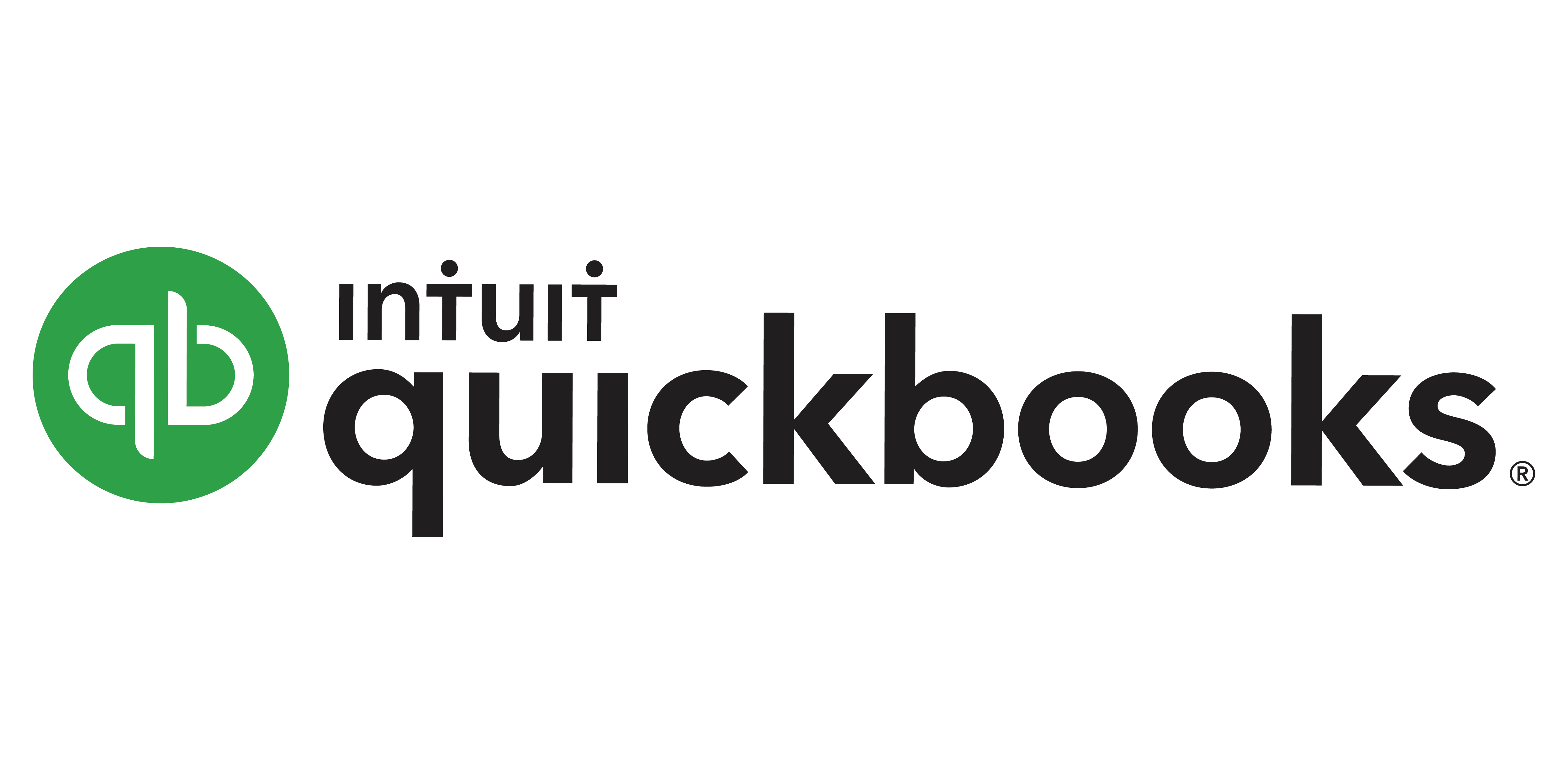What Is Assessment & Examination Software?
Assessment and Examination Software, or Testing and Evaluation Software, is a sophisticated technology that has transformed traditional test and assessment administration methods. This program is intended to improve the evaluation process by making it more efficient and accurate. It enables educators, trainers, and employers to develop, present, and analyze a variety of examinations and assessments using a digital platform.
One of the most important characteristics of assessment and examination software is the ability to design customized exams and assessments. Users can select from a variety of question kinds, including as multiple-choice, true/false, fill in the blank, and essay questions. This flexibility enables a more broad and complete assessment of the test-taker's knowledge and abilities.
Furthermore, this program allows customers to effortlessly deliver assessments to their target audience via a variety of methods, including email, internet platforms, and even physical exam centers. This removes the need for paper, saving time and money for both the administrator and the test taker. Another benefit of assessment and examination software is its sophisticated grading and reporting mechanism. With a few clicks, users may produce extensive and reliable reports on individual or group performance.
This information can assist detect knowledge gaps and influence instructional design for future exams. Additionally, many assessment and testing tools provide remote proctoring features to assure test integrity. This feature may include screen monitoring, time limitations, and biometric authentication to prevent cheating, making the evaluation process more dependable and safe.
When investing in assessment and examination software, it is critical to examine the platform's usability and interoperability with various devices and operating systems. Some software also includes configurable branding choices to match the organization's logo and colors, resulting in a more personalized experience.
What Are The Recent Trends In Assessment & Examination Software?
The subject of education has continuously developed in response to technological improvements, and assessments and tests are no exception. In recent years, numerous important developments have emerged to shape the landscape of assessment and examination software. As a buyer, you must have a thorough awareness of these patterns in order to make an informed decision when acquiring software for your school or business.
One of the most significant developments in assessment and examination software is the move to online and remote testing. Traditional paper-and-pencil tests are gradually becoming obsolete as more people utilize digital gadgets and the internet. Online testing is convenient and flexible for both examiners and examinees, and it saves time and resources.
This tendency is especially pertinent in today's environment, when remote study and employment are the norm. Another development in assessment and examination software is the use of artificial intelligence (AI) and machine learning (ML) technology. These technologies enable automatic and fast methods for grading subjective responses, detecting plagiarism, and providing individualized feedback to students.
Furthermore, AI and machine learning algorithms may evaluate data to find patterns and trends in student performance, allowing teachers to create more focused remedial courses. In recent years, there has been a greater emphasis on inclusion and accessibility in assessment and test software. This includes features like text-to-speech, speech-to-text, and customizable font size to help children with learning difficulties or linguistic obstacles.
Furthermore, there is an increasing acknowledgment of the value of using a variety of question formats to assess distinct abilities in addition to the usual multiple-choice format. Another noteworthy development is the use of data analytics for evaluation and inspection purposes. By collecting and analyzing data on student performance, software may generate extensive reports, infographics, and insights to help discover knowledge gaps and areas for development.
This data-driven strategy can help teachers make more informed judgments and increase the overall efficacy of examinations. Finally, the growth of remote proctoring options is changing the assessment and examination scene. These solutions utilize cameras and AI-powered algorithms to remotely watch pupils taking tests, verifying their identities and identifying any dubious conduct.
Benefits Of Using Assessment & Examination Software
Assessment and examination software are effective tools for streamlining and improving the process of evaluating and testing students' knowledge and abilities. Whether utilized in a school, university, or business situation, this software provides several benefits to both teachers and students.We will highlight the primary benefits of adopting assessment and examination software, allowing you to make an informed decision when comparing the numerous solutions on the market today.
1) Time and Cost Savings: Using assessment and examination software provides considerable time and cost savings. Creating and scoring a typical paper-based test may be time-consuming and costly. Instructors can simply develop and give tests using software, saving them hours of time spent manually. Furthermore, there is no need to print and distribute actual copies of tests, which saves paper and printing expenses.
2) Increased Security and Authenticity: Security and authenticity are critical considerations in any test environment, and assessment and examination software may provide both. The program provides safe access to exam questions while preventing applicants from obtaining illicit resources. It also includes measures to assure assessment integrity, such as randomized questions, time constraints, and plagiarism detection tools.
3) Customization and Flexibility: Assessment and examination software are highly customizable and flexible, catering to the unique demands and requirements of any institution or course. Instructors may build examinations with a variety of topic areas, question styles, and difficulty levels. They can also arrange tests to be taken online or in a proctored setting, giving students additional freedom.
4) Real-time Results and Analytics: Instant feedback is critical for students to assess their comprehension and progress. Assessment and examination software provides results in real time, allowing learners to receive quick feedback on their performance. The platform also provides extensive data, allowing educators to discover areas for development and track student growth over time.
5) Increased Accessibility and inclusiveness: Accessibility and inclusiveness are important issues in education, and assessment and examination software may successfully meet these objectives. The software supports adjustments for students with impairments, such as longer time or the use of assistive technology. It also creates a fair playing field for all students, regardless of geography, because assessments may be administered remotely.
Important Factors To Consider While Purchasing Assessment & Examination Software?
When selecting evaluation and examination software, buyers should examine a number of critical elements in order to discover the best solution for their needs.
Here are some important factors that every customer should bear in mind while assessing assessment and examination software options:
1. Purpose and Functionality: The software's purpose and functionality are the most important factors to examine. Different software solutions provide different features and tools, therefore it's critical to determine your exact requirements and guarantee that the program can meet them.
2. User-Friendly Interface: A user-friendly interface is required for individuals who will use the program on a daily basis. It should be simple and straightforward to use, allowing users to swiftly develop, distribute, and grade assessments without requiring technical knowledge.
3. Flexibility and Customization: It is critical to select software that provides flexibility and customization possibilities, since this allows you to personalize the tool to your needs. Look for configurable themes, question banks, and reporting possibilities.
4. Security Measures: When dealing with sensitive information, such as student records and test results, it is critical to emphasize security. Make careful to learn about the software provider's security procedures, such as encryption and access control.
5. Compatibility and Integration: Determine whether the software is compatible with your present systems and whether it integrates with any other tools or platforms you may be utilizing. This will enable a smooth process and minimize any technological concerns.
6. data and Analytics: Good assessment and examination software should give detailed data and analytics, allowing you to see patterns in student performance and identify areas for improvement. This data can help you improve your teaching tactics and student results.
7. Customer Support and Training: It is critical to select a software vendor that provides dependable and accessible customer service. Look for alternatives that include training and onboarding to guarantee that you and your staff can properly use the program.
8. Cost: While price should not be the only deciding factor, it is important to evaluate your budget and whether the program will deliver value for your money. Before making a final selection, consider any additional expenditures, such as licensing and maintenance. By weighing these crucial considerations, customers may make an educated decision about which assessment and examination software is appropriate for their needs. Consider your unique needs and perform extensive research to identify the best option for your firm.
What Are The Key Features To Look For In Assessment & Examination Software?
Assessment and examination software is a very useful tool for educational institutions, corporations, and organizations of all kinds. It simplifies the assessment and testing processes, making them more efficient, accurate, and easy for both administrators and test takers. However, with so many alternatives on the market, it can be difficult for consumers to select the best software for their individual requirements.
In this buyer's guide, we'll go over the important features to look for in assessment and examination software so you can make an informed purchase.
1. Customization And Flexibility: The program should provide customization choices for tailoring evaluations and tests to your specific needs. From question styles to time limitations and scoring criteria, the program should allow you to develop and change exams based on your organization's specific requirements. It should also be adaptable enough to handle a variety of exams, including multiple-choice, essay, and performance-based tests.
2. User-Friendly Interface: The software's interface should be simple and straightforward, making it easy for administrators and test takers to use. The layout should be tidy and well-organized, with clear and straightforward directions. This will guarantee that everyone's testing experience runs smoothly and without errors.
3. Security And Privacy: Assessment and examination software should have stringent security features to prevent cheating or manipulation. To assure test integrity, look for features such as randomized question pools, browser lockdowns, and time limitations. It should also include data encryption and secure storage to keep critical information safe from unwanted access.
4. Compatibility And Accessibility: Make that the program works with a variety of devices and operating systems, and that it is accessible across many platforms. This will allow test takers to complete the exams from any place and at their leisure, with no technological barriers.
5. Data Analysis And Reporting: The program should have powerful reporting and data analysis features to monitor test takers' performance and progress. This will give administrators with vital information into evaluating the success of their exams and identifying areas for improvement.
6. Integration With Other Systems: Determine whether the software interfaces with other systems you use, such as learning management systems (LMS), in order to streamline the assessment and examination process. This eliminates the need for manual data entry, saving time and resources for administrators.
7. Customer Support And Training: Finally, select assessment and examination software that provides dependable customer service and training materials. This will guarantee that the software is implemented and adopted smoothly, as well as assisting you in troubleshooting any difficulties that may develop.
Why Do Businesses Need Assessment & Examination Software?
In today's fast-paced, technology-driven corporate environment, the demand for precise and efficient evaluation and examination procedures is greater than ever. Businesses are continuously seeking for methods to streamline and enhance their operations, and assessment and examination software is a useful tool in this regard.
One of the primary reasons that organizations want assessment and testing software is to save time and resources. Traditional paper-based tests require substantial time and effort to create, deliver, and grade assessments. This not only strains human resources, but also raises the possibility of mistakes and inconsistencies.
Businesses may use assessment and examination software to automate these procedures, saving time and effort on assessments while enabling personnel to focus on other duties. Furthermore, evaluation and examination software enables firms to collect, store, and evaluate data. This data may give significant insights into employee performance, highlighting areas of strength and weakness.
Businesses may use this information to make more educated decisions regarding training and development programs, which will improve overall performance and productivity. Another significant advantage of assessment and examination software is its versatility. Businesses have few options for administering traditional paper-based evaluations.
However, with software, evaluations may be completed remotely, making the procedure more simple and efficient. This is especially useful for firms with remote or internationally distributed workforce. Furthermore, assessment and examination software frequently includes configurable capabilities, allowing firms to modify the exams to their own requirements.
This not only improves accuracy, but also makes evaluations more relevant and interesting for employees. Last but not least, in today's competitive business environment, employers must guarantee that their workers have the essential skills and expertise to succeed. Assessment and examination software may help with this by giving firms a full picture of their employees' skills and capabilities.
This data may be utilized to determine training requirements and create tailored learning programs to bridge skill gaps. To summarize, assessment and examination software are critical tools for organizations wishing to save time and costs, collect useful data, boost flexibility, and guarantee their staff have the skills and knowledge they need to thrive. Businesses may use the correct software to improve their evaluation procedures, resulting in greater performance, productivity, and, eventually, success.
How Much Time Is Required to Implement Assessment & Examination Software?
The time required to deploy assessment and examination software varies based on a variety of factors, including the software's complexity, the number of users, and your organization's special requirements. On average, the implementation process might take anything from a few weeks to a couple of months. The first step in installing assessment and examination software is to determine your organization's needs and goals.
This includes defining the features and functions that are critical to your company and establishing how the software will interface with your existing systems. This initial phase might take many weeks to complete. After the requirements have been clearly established, the following stage is to choose a suitable software vendor. This procedure can take anything from a few days to a couple of weeks, depending on the number of suppliers being considered and the extent of due research necessary.After choosing a vendor, the installation procedure begins. This often entails tailoring the program to your individual requirements, configuring user accounts and permissions, and moving data from your previous system. This procedure can take anything from a few weeks to a couple of months, depending on the intricacy of your organization's demands.
Once the program has been properly built, the following stage is to teach your employees on how to utilize the new system efficiently. This can take anything from a few days to several weeks, depending on the number of users and the software's complexity. It is critical to understand that the implementation process is not a one-time event; continual maintenance and upgrades are necessary to guarantee that the program runs successfully.
As a result, it is advised that you assign a specialized team or individual to handle the software and its upgrades on a regular basis. To summarize, the time necessary to develop assessment and examination software can range between a few weeks and a few months, depending on a variety of circumstances. It is critical to understand your organization's particular requirements and provide adequate resources to guarantee a successful deployment that fulfills your goals and objectives.
What Is the Level of Customization Available in Assessment & Examination Software?
Assessment and examination software is an invaluable resource for educators and businesses seeking to streamline their assessment and testing procedures. One important factor to consider when comparing software solutions is the amount of customization provided. This refers to the capacity to customize the program to your individual requirements and tastes.
In this buyer's guide, we'll look at the many degrees of customisation and how they might benefit your organization.
1. Personalization Based On Testing Requirements: The first degree of customization offered in assessment and examination software is the ability to tailor the testing procedure to your specifications. This includes features like time limitations, question categories (such as multiple-choice, essay, or fill-in-the-blank), and the ability to customize the scoring system.
2. Branding And Design Customization: Many software solutions allow you to alter the appearance and branding of the assessment interface. This allows you to use your school's or organization's logo and colors to create a consistent and professional appearance for your examinations.
3. Custom Question Creation: Another degree of customization is the option to build your own questions rather than utilizing pre-existing templates. This is especially valuable for instructors who have specific learning objectives and wish to create exams that are relevant to their curriculum.
4. Adaptive testing: Some software solutions include adaptive testing, which implies that the difficulty level of the questions varies based on the student's performance. This enables a more tailored and accurate assessment of each student's knowledge and skills.
5. Integration With Other Tools: Organizations that utilize other software solutions must pick assessment and examination software that is compatible with those products. This level of customisation enables the smooth flow of data across various systems, reducing time and enhancing efficiency.
6. Report Customization: Another important factor to examine is the amount of customisation possible in the reports provided by the program. This includes the option to choose particular data points, change the style and appearance, and put your own commentary or notes.
Which Industries Can Benefit The Most from Assessment & Examination Software?
Assessment and examination software has become a vital tool for many businesses since it provides a contemporary and efficient approach to perform assessments and evaluations. This sort of software is intended to expedite the entire test process, from developing questions to grading results. As technology advances, more and more businesses see the benefits of using assessment and evaluation software.
In this buyer's guide, we will look at which sectors will gain the most from this software and how it may help them enhance their operations.
1. The Education: Industry is one of the most apparent areas that might profit from assessment and examination software. With the increased popularity of online learning, this software has become an invaluable tool for administering tests and assessments remotely. It enables educators to build personalized exams and quizzes, grade them automatically, and deliver real-time feedback to students. Furthermore, it reduces the time and effort necessary for administrative activities, freeing educators to concentrate on teaching and student involvement.
2. Corporate Sector: Assessment and examination software are frequently used in the corporate sector, particularly during the recruiting process. It allows HR professionals to screen and analyze candidates more efficiently, therefore saving time and resources. This program also includes features like candidate monitoring, automatic scheduling, and customisable tests, making it an excellent choice for recruiting operations. Furthermore, it may be utilized in employee training programs, allowing employers to track their employees' growth and performance.
3. Healthcare Industry: Assessment and examination software may also aid the healthcare business significantly. With an increased emphasis on patient-centered care, healthcare companies are implementing this software to assess their staff's knowledge and abilities. It may be used to administer certification tests, evaluate ongoing training programs, and determine the competency of healthcare workers. Using this software, healthcare companies may verify that their personnel is properly equipped to give high-quality treatment to their patients.
4. Government Agencies: Government agencies are frequently required to provide a variety of tests and examinations for recruitment, advancement, and certification. Assessment and examination software provides a cost-effective and efficient answer for these companies. It contributes to lowering administrative complexity, simplifying the review process, and assuring fairness and openness. With configurable features, these organizations may develop assessments that are suited to their individual requirements and goals.
5. Non-profit: Organizations can also benefit from evaluation and examination software. These groups frequently have limited resources and must optimize their influence. They may use this software to examine and evaluate their programs' efficacy. This information may then be utilized to develop programs and demonstrate the effect of their efforts to stakeholders.
Conclusion
Instead, add it individually. To summarize, selecting the appropriate assessment and examination software for your company necessitates careful analysis and review. By examining your individual requirements and comparing the features and capabilities of several software alternatives, you may find a great tool to improve your evaluation and examination procedures.
Remember to consider features like question customization, data analysis, and reporting, as well as interoperability with your current systems and security measures. It is also vital to assess the software's usability and accessibility, as well as support and training offerings.
By properly researching and comparing various software solutions, you can make an informed decision that meets your organization's specific needs. With the correct assessment and examination software, you can easily and effectively manage assessments, analyze data, and make data-driven choices, resulting in better results and success for your firm.






















